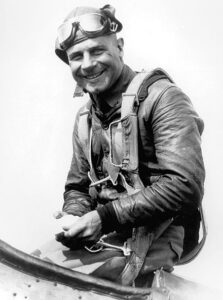
Jimmy Doolittle One of the Pioneers of Instrument Flying. In the annals of aviation history, there are few figures as legendary as James Harold Doolittle, known to the world as Jimmy Doolittle. His contributions to aviation spanned both military and civilian realms, and his daring feats made him a household name during the early 20th century. In this blog post, we will delve into the life and achievements of this iconic aviator who pushed the boundaries of flight, leaving an indelible mark on the aviation industry.
Early Life and Education of Jimmy Doolittle
Born on December 14, 1896, in Alameda, California, Jimmy Doolittle developed a fascination with aviation from a young age. He attended Los Angeles City College before transferring to the University of California, Berkeley, where he earned a Bachelor of Arts degree in 1922. However, his passion for flying led him to pursue a career in aviation.
Pioneering Aviation Achievements
- First Solo Transcontinental Flight: In 1922, Doolittle achieved a significant milestone by completing the first solo transcontinental flight from Pablo Beach, Florida, to San Diego, California, in just under 22 hours. This remarkable feat earned him the prestigious Harmon Trophy, setting the stage for his future aviation endeavors.
- Thompson Trophy: Doolittle’s racing career was equally illustrious. He won the 1925 Schneider Trophy race and the 1932 Thompson Trophy race, solidifying his reputation as one of the fastest aviators in the world.
Military Service and the “Doolittle Raid”
Doolittle’s contributions to aviation extended to the military arena. During World War II, he played a pivotal role in planning and leading the daring “Doolittle Raid.” This audacious operation involved launching B-25 Mitchell bombers from the aircraft carrier USS Hornet to strike Tokyo and other Japanese targets in April 1942. Though the raid caused limited physical damage, it boosted American morale and forced Japan to divert resources for homeland defense.
Doolittle’s leadership and courage in this mission earned him the Medal of Honor. He was later promoted to the rank of Major General, reflecting his significant influence on the U.S. Army Air Forces.
Post-War Contributions
After World War II, Jimmy Doolittle continued to make significant contributions to aviation. He became a prominent advocate for the development of supersonic flight and was instrumental in the X-1 rocket plane project, which ultimately led to Chuck Yeager’s breaking of the sound barrier in 1947.
 Instrument Flying Pioneer
Instrument Flying Pioneer
While Jimmy Doolittle’s feats as a pilot and military leader are widely celebrated, his contributions to the development of instrument flying are equally significant. Instrument flying is the practice of operating an aircraft solely by reference to instruments, without visual cues. In an era when aviation primarily relied on visual navigation, Doolittle played a pivotal role in advancing this crucial aspect of flying.
- Instrument Flight Experiments: In the 1920s, Doolittle participated in groundbreaking instrument flight experiments. At the time, flying in adverse weather conditions or through thick clouds was extremely dangerous due to the lack of reliable instruments. Doolittle’s involvement in these experiments helped develop and refine instruments such as the artificial horizon and directional gyro, which are essential for maintaining aircraft control without visual reference.
- Instrument Flying Instruction: Doolittle recognized the importance of instrument flying and its potential to enhance aviation safety. He played a key role in advocating for the inclusion of instrument flying training in pilot curricula. His efforts led to the establishment of instrument flight schools and paved the way for the widespread adoption of instrument flying techniques in aviation training.
- Instrument Flying Advocacy: Doolittle’s influence extended to national aviation policy. He used his position as an influential figure in the aviation community to promote instrument flying as a critical skill for pilots. His advocacy helped shape regulations and standards related to instrument flight, making aviation safer and more reliable.
- Instrument Flight in Military Operations: During World War II, the importance of instrument flying became even more evident. Doolittle’s leadership in the U.S. Army Air Forces included a focus on instrument training for military pilots. This prepared them to operate effectively in challenging combat situations, including night and adverse weather operations.
Wrapping It Up
Jimmy Doolittle’s dedication to advancing instrument flying revolutionized aviation safety and efficiency. His work laid the foundation for modern aviation, where instrument flying is a fundamental skill for pilots, enabling them to navigate safely through various weather conditions and ensuring the continued growth of commercial and military aviation. In addition to his daring exploits and leadership, Doolittle’s contributions to instrument flying solidify his legacy as a pioneer who not only pushed the boundaries of flight but also made aviation safer and more accessible for generations to come. His impact on aviation technology and safety remains a testament to his enduring influence on the aviation industry. That’s it friends for this week, hope you are enjoying our series on famous Aviators, until next time, Be Social, Fly Private!

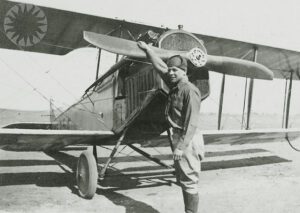 Instrument Flying Pioneer
Instrument Flying Pioneer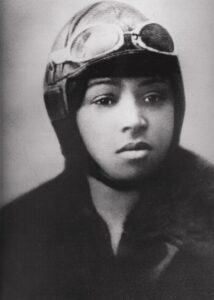
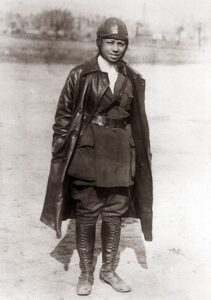 Bessie Coleman: Barnstorming and Breaking Barriers
Bessie Coleman: Barnstorming and Breaking Barriers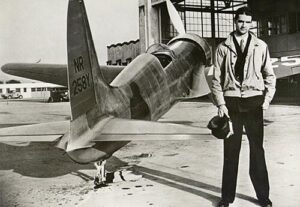

 Diwali, November 12th, also known as the “Festival of Lights,” is a vibrant and culturally rich celebration that extends for around five official days but often lasts even longer. During this festival, people engage in a multitude of traditions, including the exchange of gifts, the lighting of butter and oil lanterns, and the spectacular display of fireworks. However, the festival’s exuberance extends beyond its designated duration, with fireworks illuminating the skies throughout this festive season. Diwali is a time when many Indians choose to take their holidays, either during the festival itself or immediately after. As a result, cities across India can become bustling hubs of internal tourism, drawing visitors from various regions to partake in the festivities. The atmosphere during Diwali is nothing short of magical, with streets adorned in colorful decorations, traditional music filling the air, and a sense of joy and togetherness that is truly infectious.
Diwali, November 12th, also known as the “Festival of Lights,” is a vibrant and culturally rich celebration that extends for around five official days but often lasts even longer. During this festival, people engage in a multitude of traditions, including the exchange of gifts, the lighting of butter and oil lanterns, and the spectacular display of fireworks. However, the festival’s exuberance extends beyond its designated duration, with fireworks illuminating the skies throughout this festive season. Diwali is a time when many Indians choose to take their holidays, either during the festival itself or immediately after. As a result, cities across India can become bustling hubs of internal tourism, drawing visitors from various regions to partake in the festivities. The atmosphere during Diwali is nothing short of magical, with streets adorned in colorful decorations, traditional music filling the air, and a sense of joy and togetherness that is truly infectious.
